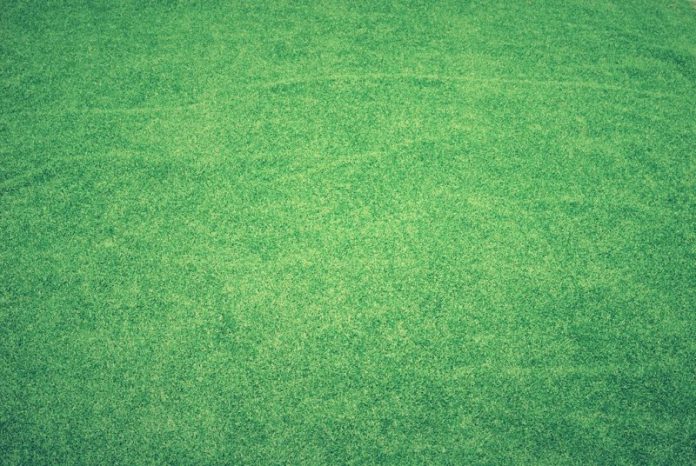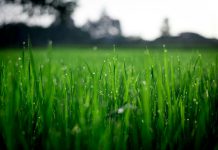Hydroseeding is an innovative seeding technique that uses a mixture of seeds, water, fertilisers, mulch, and other additives to form slurry. This slurry is then sprayed onto the soil in an even layer to create healthy topsoil and promote growth. Hydroseeding is becoming increasingly popular because of its many benefits over other seeding methods like sodding, hand seeding, and broadcast seeding. Advantages include everything from flexibility and cost-effectiveness to healthier and faster growth. Read on to find out how hydroseeding can benefit you and your land.
Cost-Effectiveness
One of the major advantages of hydroseeding is how economical it is compared to other seeding techniques like hand seeding and sodding. In addition to saving money, it also saves time and materials. In fact, hydroseeding often costs 50-80% less than sodding because of how much people save on labour costs and material. When it comes to hand sowing, hydroseeding isn’t just more cost-effective – it’s also faster. Hydroseeding can cut down sowing time while promoting more beneficial overall results, making it an extremely effective seeding solution.
Coverage
The process ensures uniform coverage, even for large areas like golf courses. It covers the ground in slurry, which forms a barrier to retain moisture and keep seeds, fertilizer, and other additives in place. Hydroseeding is also beneficial because it can cover otherwise inaccessible areas. Slopes, for example, are too steep for sodding but can be tackled with hydroseeding. Sodding and broadcast seeding can also result in patchiness and seams showing. Hydroseeding eliminates this and creates thick, even coverage.
Versatility
Hydroseeding is being used more than sodding and hand seeding because of how versatile it is. It has a range of applications that cover several applications and sites. These include residential lawns, roadsides, national parks, city parks, and even landfills. In addition to erosion control, hydroseeding is great for hillside stabilisation, wildlife repair, dust control, soil renovation, vegetation restoration, and temporary covering stockpiles of soil. Its versatility also comes from the fact that hydroseeding can add local seed varieties into the slurry mix sprayed on the land.
Healthier Vegetation
Hydroseeding also results in healthier and more long-lasting vegetation than hand seeding and sodding. The seeds are adjusted to the soil conditions and, thus, are resistant to external problems that may arise. Hydroseeding doesn’t use transplantation but grows vegetation at the source. This eliminates soil adaptation issues and the possibility of transplant shock.
The germination process speeds up, and the vegetation grows deep roots because hydroseeding holds more moisture than other seeding techniques. The slurry combines different elements which work together to maximise seed growth. In fact, each ingredient has a purpose. Mulch fibre prevents water and wind erosion while also protecting against sun damage and temperature fluctuation. When it eventually decomposes, it further enhances the germination process by nourishing the soil. The fertilisers work to improve the pH levels of the soil while simultaneously enhancing root growth. Therefore, the different components all work together to provide a healthier result than hand seeding and sodding.
Water Retention
Hydroseeding is known for water retention and can retain up to 10 times its weight in water. This then helps healthy germination, acts as a moisture sealant to protect seeds, and improves the chances of plant survival. Neither sodding nor hand-seeding has this advantage.
After the mixture is bound to the soil, the water and nutrients are released slowly to the root system so that there’s plenty of nourishment before the next bout of rain. Even areas suffering from drought can benefit from hydroseeding because the roots grow deep into the ground to reach moisture.
Customisation
Customisation is easy with hydroseeding because you can use different grass seeds and keep the clients’ preferences in mind when trying to match their aesthetic requirements.
Erosion Control
Hydroseeding is most commonly known for erosion control and its ability to hold moisture while guarding against wind, sun, pests, and rain. The slurry uses tackifiers to bind the combination of mulch, seeds, fertilisers, and additives, which then bind with the soil.
Speed
Sodding may show instant results, but hydroseeding is easier and quicker to install. This, combined with the lower cost, higher quality, excellent coverage, and erosion control, make hydroseeding the superior choice. When compared to broadcast seeding, hydroseeding is faster to grow and develop turf.
These advantages have made hydroseeding an extremely popular seeding technique. Hydroseeding is not reserved for large areas like roadsides, parks, and golf courses. It is now common to restore smaller areas like lawns and gardens using the technique.













